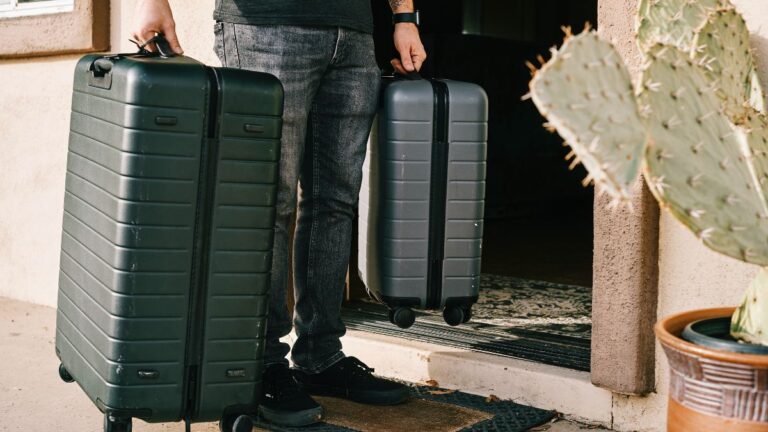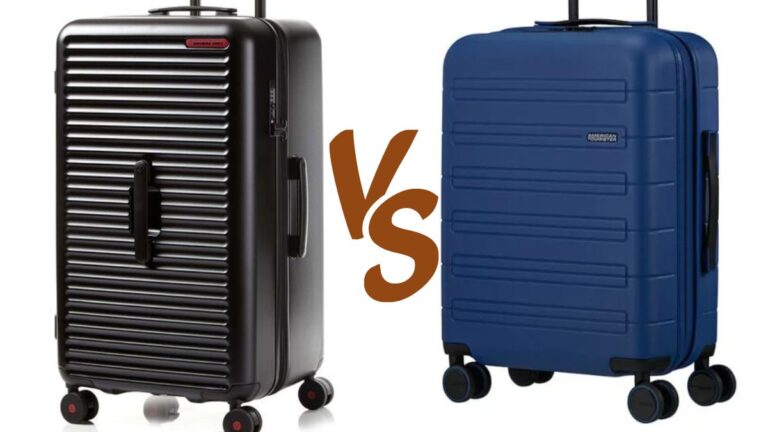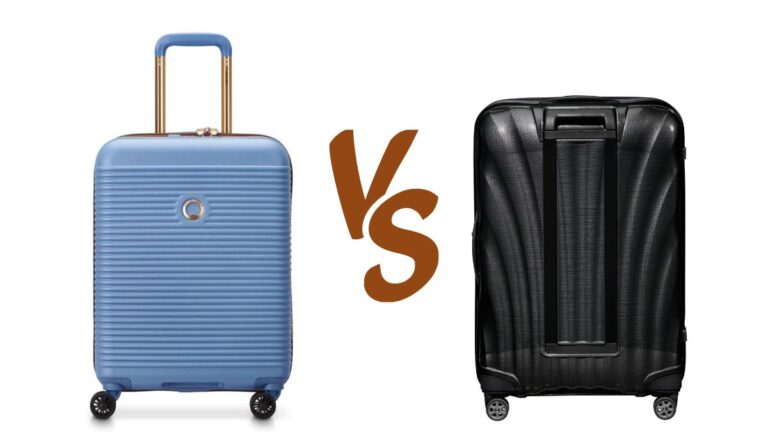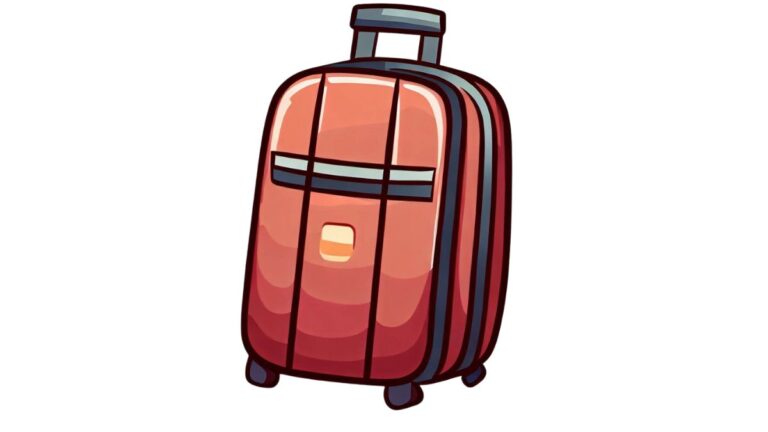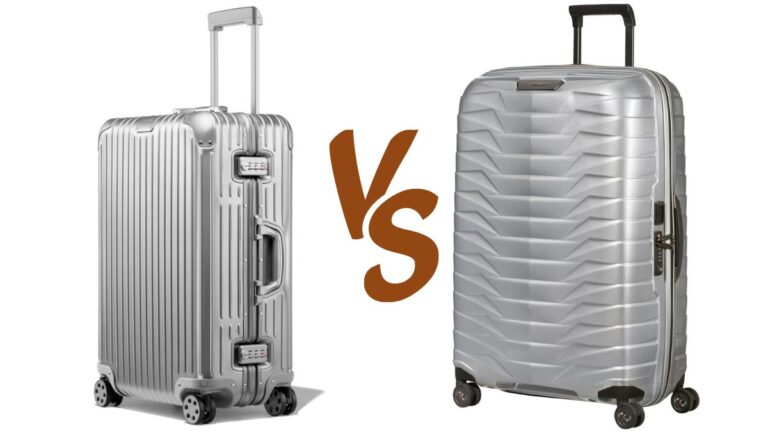How Big is a Travel Pack? Understanding Dimensions & Capacity

As participants in Amazon Associates and other programs, we earn from qualifying purchases. This comes at no additional cost to you. For more details, see our Affiliate Disclosure.
In the realm of travel, the size of your pack can often dictate the ease and quality of your journey. Whether you’re jet-setting across continents or just headed for a weekend getaway, understanding the dimensions and capacity of travel packs is essential to streamline your adventure. This guide dives deep into the intricacies of travel pack sizes, ensuring you’re well-equipped to select the perfect one for your next escapade.
HIGHLIGHTS
- Travel packs come in various sizes, from daypacks to extended trip packs, with average weights ranging from 1 to 8+ lbs.
- Material choice, such as nylon, polyester, and Cordura, plays a pivotal role in a pack’s durability, weight, and size.
- Seasonal conditions and specific activities dictate the most suitable travel pack choice, with different designs catering to various travel demands.
- A tailored pack choice ensures a comfortable and smooth travel experience, optimized for the nature of one’s adventure.
Best Travel Packs
Osprey Farpoint 40 Travel Backpack
- Size/Capacity: 40 liters
- Weight: Approximately 3.17 lbs.
- Material: 210D Nylon Mini Hex Diamond Ripstop
- Features:
- Large panel zip access to main compartment
- Lockable sliders on main compartment zipper
- Dual front compression strap
- Stowaway back panel, harness, and hip belt
- Laptop and tablet sleeve secure in lockable compartment
Deuter Transit 40 Travel Backpack
- Size/Capacity: 30 liters
- Weight: Approximately 2.8 lbs.
- Material: 420D Nylon, 600D Polyester Print, 300D Mini-Ripstop, 1680D Ballistics Nylon
- Features:
- FlexVent™ suspension system with custom injection-molded shoulder straps
- Padded air-mesh back panel with a spine channel
- Large main compartment with padded laptop sleeve (fits most 15″ laptops)
- Front compartment with internal organization, a padded tablet sleeve, and secure-zip pockets
- Two external mesh water bottle pockets
- Front stash pocket with stretch mesh for quick access
- Reflective details for low-light visibility
The Basics of Travel Pack Dimensions: What Do They Mean?
Venturing into the world of travel gear, especially if you’re a novice, can be slightly overwhelming. One of the first things you’ll encounter when looking for the perfect travel pack is its dimensions. But what do these numbers and measurements actually mean, and why are they essential? Let’s break it down.
Height, Width, and Depth
These are the three primary dimensions of any pack. Typically, they are listed in that order: height x width x depth.
- Height: This refers to how tall the pack is from its base to its top. For backpacks, it’s the length from the bottom to where it would rest near the nape of your neck.
- Width: This is the measurement across the front of the pack — from one side to the other.
- Depth: Also referred to as “thickness,” this dimension tells you how much the bag expands outward from your back or from its front panel.
Why Dimensions Matter
- Fit: Especially with backpacks, the height of a pack can influence how comfortably it sits on your back. A pack that’s too long might sit uncomfortably low on your hips, while one that’s too short may not distribute weight correctly.
- Capacity: Though dimensions give a physical size, they indirectly influence how much you can fit inside. However, it’s the volume (usually given in liters or cubic inches) that provides a direct measure of capacity. More on that later!
- Travel Restrictions: Airlines, trains, and buses might have specific size restrictions, especially for carry-on luggage. Knowing your bag’s dimensions ensures you don’t face any surprises at the boarding gate.
When discussing the size of a travel pack, there are wide variations depending on the type of pack and its intended use. Here’s a general table outlining the different sizes, dimensions, and weights for common travel packs.
| Type of Pack | Average Dimensions (H x W x D) | Average Weight |
|---|---|---|
| Daypack | 16-22″ x 9-11″ x 8-10″ | 1-3 lbs. |
| Weekend Pack | 22-25″ x 12-15″ x 10-12″ | 2-5 lbs. |
| Multi-Day Pack | 25-30″ x 12-15″ x 12-15″ | 4-7 lbs. |
| Extended Trip Pack | 30-36″ x 14-18″ x 12-16″ | 5-8+ lbs. |
| Technical Packs | Varies by purpose and design | Typically 3-8+ lbs. |
Please note that these are just average figures, and actual sizes and weights may vary depending on the brand and specific design.
Types of Travel Packs: From Daypacks to Backpacking Giants
Travel packs come in a myriad of shapes, sizes, and designs, each crafted to suit a particular kind of traveler and their unique journey. From the minimalistic wanderer who packs light for a day of exploration to the seasoned trekker preparing for a month-long expedition, there’s a pack tailored for every adventure. Let’s dive into the various types of travel packs available and the journeys they’re best suited for.
1. Daypacks:
- Description: These are small and lightweight packs, designed for short outings or daily adventures. Ideal for city explorers, hikers, or anyone planning a single day outing.
- Typical Size: Ranges from 10 to 30 liters in capacity.
- Key Features: Often equipped with a few compartments, hydration bladder sleeve, and easy-to-access pockets.
2. Backpacking Packs:
- Description: Designed for multi-day adventures, these packs can handle everything from weekend camping trips to weeks-long treks in the wilderness.
- Typical Size: 50 to 80 liters (or more) in capacity.
- Key Features: Multiple compartments, adjustable harness systems, reinforced hip belts, and often come with built-in rain covers.
3. Travel Backpacks:
- Description: A hybrid between a daypack and a trekking pack, these are tailored for travelers moving between cities or countries but aren’t necessarily trekking in the wilderness.
- Typical Size: 40 to 70 liters.
- Key Features: More organizational pockets, lockable zippers, sometimes come with detachable daypacks.
4. Wheeled Backpacks:
- Description: These packs combine the portability of a backpack with the convenience of a rolling suitcase.
- Typical Size: 40 to 70 liters.
- Key Features: Retractable handles, durable wheels, and often structured like travel backpacks with a variety of pockets.
5. Duffel Bags:
- Description: While not technically a “backpack,” duffels are popular for travelers due to their ease of packing and robustness.
- Typical Size: Can range widely, from 30 to 120 liters.
- Key Features: Can be carried by hand, on the shoulder, or even as a backpack. Often water-resistant and durable, with a large central compartment.
6. Specialty Packs:
- Description: These are designed for specific activities like skiing, climbing, or photography.
- Typical Size: Varies based on purpose.
- Key Features: Come with features like reinforced gear loops, camera compartments, or ski and snowboard attachment systems.
Selecting the right type of travel pack hinges not just on the duration of your trip but also on the nature of your adventure. Whether you’re navigating urban jungles, trekking through actual ones, or somewhere in between, there’s a pack out there designed just for your journey.
Understanding Capacity: Liters, Cubic Inches, and What You Can Fit
When it comes to deciphering the capacity of travel packs, two units of measurement often pop up: liters and cubic inches. While the metric system uses liters, many American brands opt for cubic inches. As a rough guide, 1 liter is approximately 61 cubic inches. However, these numbers are just a starting point. The real question is, what do these figures mean in practical terms?
More than Just Numbers
A pack’s volume doesn’t straightforwardly translate to how much stuff you can fit inside. For instance, a 40-liter pack from one brand might accommodate more of your gear than the same capacity from another brand, based on design, compartmentalization, and material flexibility. It’s essential to recognize that the stated volume is a sum total of all compartments, pockets, and main storage areas.
Visualizing Capacity
To better gauge the size, think of the capacity in terms of everyday items. For example:
- A 10-liter pack might hold your essentials like a jacket, a water bottle, some snacks, and a small first aid kit—perfect for a day out.
- A 60-liter backpack, on the other hand, might fit a week’s worth of clothing, a sleeping bag, cooking equipment, and more—ideal for an extended camping trip.
Factors Affecting Actual Storage
The shape and design of items you’re packing can also affect the usable space. Soft, malleable items like clothing can be compressed and adjusted, maximizing space. Harder items, like camera equipment or cooking pots, are less flexible and may leave unused gaps.
The Goldilocks Principle
Finding the right capacity isn’t about going for the largest pack possible. It’s about identifying the “just right” size for your needs. Too small, and you’ll be struggling to fit everything; too large, and you risk over-packing and carrying unnecessary weight.
The Importance of Weight Distribution
Carrying weight comfortably boils down to how well it’s distributed across your pack and, consequently, your body. When a pack’s weight is balanced, it can feel significantly lighter than its actual weight, allowing you to move freely and prevent unnecessary strain.
Ensuring the heaviest items are placed closer to your back, ideally around the mid-back region, is crucial. This positioning maintains your center of gravity, helping you maintain an upright posture and reducing the risk of back pain.
It’s also essential to consider lateral distribution. If one side of your pack is heavier than the other, it can lead to imbalances, causing discomfort or even injury over extended periods.
Hip belts on larger backpacks aren’t just for show. By transferring up to 80% of the pack’s weight to the hips and away from the shoulders, they help distribute the load more evenly across the body’s stronger muscles, making for a more comfortable journey.
Compression straps, often found on the sides or bottoms of many travel packs, aren’t only for minimizing size. By tightening your gear, they help stabilize and evenly distribute the weight, preventing items from shifting around during movement.
Lastly, it’s always a good idea to periodically reassess and adjust your pack during your travels. As items are used or added, the weight distribution can change, so regular check-ins ensure you’re always carrying your load in the most efficient manner possible.
Factors Influencing the Ideal Pack Size
When selecting the perfect travel pack, several factors play a crucial role in determining the most suitable size. Understanding these can make the difference between a comfortable journey and one filled with hassles and discomfort. Here are the primary considerations to keep in mind:
1. Duration of the Trip: The length of your journey is often the first determiner. Naturally, a weekend getaway requires a smaller pack than a two-week expedition. However, it’s also essential to recognize that efficient packers can make do with less space than one might expect, even for extended trips.
2. Type of Activity: Are you backpacking through rugged terrains, going on a business trip, or just city hopping in Europe? Each activity has specific gear requirements. For instance, hiking might require tents and sleeping bags, while a city trip might need more daily essentials and less specialized equipment.
3. Climate and Season: Traveling in colder regions or seasons usually means bulkier clothing and perhaps additional layers, leading to the need for a larger pack. In contrast, tropical destinations with lightweight clothing might not demand as much space.
4. Personal Packing Habits: Some people are minimalists by nature, needing very little to get by, while others prefer having a variety of options available. Recognizing your packing style is essential. Do you pack a different outfit for each day, or do you mix and match a few staples?
5. Specialized Gear: If your journey includes specific activities like photography, diving, or climbing, the equipment for these can substantially influence the size of the pack you need.
6. Accessibility and Organization: Sometimes, the choice of pack size isn’t just about how much it can hold but how it holds. Travelers who prioritize easy access to their items might prefer a slightly larger pack with multiple compartments rather than stuffing everything into a smaller, single-compartment bag.
7. Mode of Transportation: If you’re traveling by air, especially with budget airlines, you’ll need to consider carry-on restrictions. Similarly, if you’re hopping on and off trains or buses, a more compact and manageable pack might be beneficial.
8. Future Use: Are you buying a pack just for this trip, or do you envision multiple travels in the future? Sometimes it’s worth investing in a slightly larger pack, thinking ahead about other adventures you might undertake.
Determining the ideal pack size isn’t a one-size-fits-all endeavor. It’s a balance of practical requirements, personal preferences, and the unique characteristics of each journey. It’s always worth taking a moment to assess and choose wisely, ensuring comfort and convenience on the road.
Carry-On vs. Checked Bag: Knowing the Limits
Traveling by air comes with its own set of challenges and considerations. One of the primary decisions you’ll have to make is whether to opt for a carry-on bag or check your luggage. Both choices have their merits and potential drawbacks, and understanding the limits can help streamline your flying experience.
Carry-On Bags
- Size Restrictions: Each airline has specific size dimensions for carry-on bags, typically dictated by the overhead bin sizes of their aircraft. These dimensions often fall in the range of 22 x 14 x 9 inches, but it’s essential to check the airline’s official guidelines.
- Weight Limits: Beyond size, many airlines have a weight restriction for carry-on bags, commonly ranging from 15 to 22 pounds.
- Advantages: With carry-ons, there’s no waiting at the baggage claim, and there’s a reduced risk of lost or damaged luggage. Additionally, having your belongings within reach can be reassuring, especially if you have essential items.
- Drawbacks: The limited size might restrict what you can bring, especially for longer trips. Also, liquid restrictions mean you can only bring containers holding 3.4 ounces (100 milliliters) or less, placed in a single quart-sized bag.
Checked Bags
- Size and Weight Restrictions: Checked bag limits can vary even more widely than carry-ons. Typically, a standard checked bag should not exceed 62 linear inches (length + width + height) and often has a weight limit ranging from 40 to 50 pounds for economy passengers.
- Advantages: Checked bags allow for more packing space, making them ideal for extended stays or trips requiring bulkier items. They also free you from managing your luggage during layovers or while navigating through the airport.
- Drawbacks: There’s always a risk of the airline misplacing your luggage. Furthermore, you’ll have to factor in additional time for dropping off your luggage before your flight and collecting it afterward. Additionally, many airlines charge fees for checked bags, adding to your travel expenses.
Considerations and Tips
- Fees and Charges: Many airlines charge for checked bags, with the fees increasing for oversized or overweight luggage. Some airlines even charge for carry-ons beyond a personal item, especially budget carriers.
- Pack Essentials in Carry-On: Regardless of checking a bag, always pack essential items like medications, important documents, valuables, and a change of clothes in your carry-on, in case your checked bag gets delayed or lost.
- Check Multiple Flights: If your journey involves multiple airlines, remember to check each airline’s baggage policy. The most restrictive policy might apply.
The decision between a carry-on and a checked bag boils down to the nature and duration of your trip, as well as your personal preferences. By understanding the limits and being aware of potential costs, you can make a choice that best suits your travel needs.
Adjustable Sizes: Harnessing & Hip Belts Explained
Travel and outdoor enthusiasts know that a good backpack isn’t just about capacity—it’s also about fit. Having a well-fitted pack can be the difference between a comfortable trek and a painful ordeal. One of the significant advancements in modern backpacks is the introduction of adjustable sizing, primarily through adjustable harnesses and hip belts. Here’s an explanation of how these features work and why they’re so essential.
Harnessing System Explained
The harnessing system of a backpack typically comprises shoulder straps, load lifters, sternum straps, and the back panel. An adjustable harness allows wearers to modify the torso length, ensuring the pack sits at the optimal height on their back.
- Torso Length: The distance from the base of the neck to the top of the hip bones is called the torso length. Since people come in different sizes, an adjustable torso length is crucial to cater to everyone’s unique measurements.
- Load Lifters: These are straps located at the top of the shoulder straps, connecting them to the top of the pack. By adjusting these, wearers can change the angle at which the pack leans into their body, ensuring that the weight remains close to the center of gravity.
- Sternum Strap: Positioned across the chest, this strap keeps the shoulder straps in place, preventing them from moving outward. This even distribution prevents pressure points and enhances stability.
Hip Belts Explained
The hip belt is arguably one of the most vital components of a backpack, especially for heavier loads. A well-fitted and padded hip belt transfers the bulk of the pack’s weight onto the hips, away from the shoulders.
- Padding and Fit: The primary purpose of the hip belt is comfort. Thick padding ensures that weight doesn’t press into the hip bones. The belt should sit atop the hip bones, encompassing them snugly.
- Adjustable Width: Many modern backpacks come with hip belts that can be adjusted in width or even completely replaced to cater to different waist sizes.
- Load Stabilizers: These are smaller straps on the hip belt, connecting it to the lower part of the pack. By tightening or loosening these, wearers can adjust how closely the pack sits against their lower back.
The Benefits
Having a backpack with adjustable harnessing and hip belts ensures:
- Optimal Weight Distribution: This minimizes strain on any single part of the body, distributing the pack’s weight across the body’s stronger muscles.
- Reduced Fatigue: A well-fitted pack allows wearers to travel longer distances with less fatigue and discomfort.
- Versatility: A backpack with adjustable features can be shared among different people or adjusted as one’s physical conditions change over time.
When shopping for a backpack, especially for outdoor adventures or extended travel, prioritize models with adjustable harnessing systems and hip belts. This attention to fit and comfort will make all the difference in your travel experience.
How to Measure Your Own Packing Needs
Understanding your packing needs is an integral part of any travel preparation. While everyone’s requirements might differ, there are some common ways to gauge what you truly need to pack.
Start with the basics: Think about the core items you need daily. This often includes necessities like underwear, socks, personal hygiene items, and daily medications. These items form the base of your packing list, ensuring you’re comfortable and healthy during your travels.
Consider the climate: The weather and temperature of your destination significantly impact your packing choices. Hot and humid conditions might mean lightweight and breathable clothing, while colder regions will require layers, including thermals, jackets, and perhaps even gloves or hats.
Plan outfits, don’t just pack clothes: Instead of throwing random pieces of clothing into your suitcase, visualize complete outfits. By doing so, you’ll likely find that you need fewer items than you think. Plus, by focusing on versatile pieces that can mix and match, you can create multiple looks with fewer clothes.
Think about activities: Are you going to be hiking, swimming, attending formal events, or exploring urban areas? Your planned activities dictate the kind of clothing and gear you’ll need. Always pack suitable footwear, as the wrong shoes can make or break your experience.
Limit “just in case” items: It’s tempting to pack things for hypothetical situations, but these often add unnecessary weight and take up precious space. Instead, focus on what you’re certain you’ll need. Remember, in most places around the world, you can purchase forgotten items or things you end up needing unexpectedly.
Streamline your toiletries: Instead of packing full-sized products, opt for travel-sized versions or use refillable bottles. Think about multi-use products, like shampoos that also act as body wash or a moisturizer with SPF protection.
Remember the essentials: Things like passports, tickets, chargers, and necessary medications should be top of mind. It’s a good idea to have a dedicated pouch or compartment in your bag for these vital items, so they’re always within easy reach and not lost among other belongings.
Measuring your packing needs isn’t about cramming as much as possible into a bag. It’s about thoughtful selection, ensuring that what you bring aligns with your plans, and enhances, not hinders, your travel experience. As you travel more, you’ll refine your packing strategy, striking the right balance between preparedness and simplicity.
Materials & Durability: How It Affects Pack Size and Weight
When selecting a travel pack or backpack, the materials used can play a pivotal role not only in the pack’s durability but also its size and weight. The interplay between these factors determines how the bag will perform in various conditions and how much strain it can handle over its lifetime.
Materials
Travel packs come in a myriad of materials, each with its own set of attributes.
- Nylon and Ripstop Nylon: These materials are popular due to their excellent strength-to-weight ratios. Ripstop variants have a special weave that stops small tears from enlarging, making it particularly valuable for adventurous travelers.
- Polyester: Often found in budget packs, polyester is less durable than nylon but is resistant to UV degradation.
- Canvas: This classic material is durable and robust, but it’s also heavier. It might give a vintage aesthetic to the pack but can add significant weight.
- Cordura: A type of nylon known for its durability and resistance to abrasions, tears, and scuffs. It’s often used in high-end and military bags.
- Leather: While it can be heavy and require more maintenance, leather is durable and can offer a stylish and timeless look.
Durability and Weight Interplay
The thickness and weave of the material (often denoted in deniers for synthetic materials) can influence both the durability and weight. A higher denier count generally indicates greater thickness and strength but also adds weight.
For instance, a pack made of 1000D (denier) Cordura will be more durable but heavier than one made of 500D Cordura.
Zippers, Buckles, and Stitching
These components might not seem crucial, but they can significantly affect a bag’s durability. For example, YKK zippers are often sought after due to their reputation for reliability. Similarly, reinforced stitching at stress points can prolong the life of a bag.
Coatings and Treatments
Many packs come with added coatings or treatments, like PU (polyurethane) for water resistance or DWR (durable water repellent) for water shedding. While these additions can marginally increase weight, they boost the bag’s ability to handle adverse conditions.
Pack Size
The material can influence the pack size in two main ways:
- Flexibility: Softer materials can allow a bag to expand and contract more readily, adapting to the contents. This adaptability might be advantageous for travelers who don’t always carry the same amount of gear.
- Bulkiness: Some materials, especially those that are more robust, can add bulk even when the pack is empty.
When evaluating a travel pack, it’s essential to find the right balance for your needs. If you’re embarking on rugged adventures and need something that will last for years, it might be worth investing in a slightly heavier bag made of more durable materials. On the other hand, if lightweight travel is your priority, there are plenty of materials and designs optimized for that purpose without sacrificing too much in the durability department.
Tailoring Your Pack Choice to Your Adventure: Seasonal and Activity-Based Considerations
Choosing the right travel pack is akin to selecting the right tool for a job. The type of adventure you’re embarking on, including seasonal and activity-based considerations, will dictate the most suitable pack for your needs.
Seasonal Considerations
Traveling in different seasons presents unique challenges. Winter travel often requires bulkier clothing, perhaps even snow gear, demanding a pack with a larger capacity.
Additionally, water-resistant or waterproof materials become vital. Summer trips, conversely, might mean lighter clothing but added essentials like sun protection, making organizational pockets essential. Travel during monsoon seasons necessitates waterproof packs or covers to protect your belongings from incessant rain.
Activity-Based Considerations
Your planned activities significantly shape your pack choice. Trekking or hiking adventures call for backpacks with ergonomic designs, robust frames, and breathable back panels. If you’re backpacking through cities, you might prioritize packs with secure, lockable compartments and a more compact design for urban mobility.
Camping enthusiasts should look for packs with external loops or straps to attach tents or sleeping pads. Meanwhile, those on a beach holiday might opt for a lightweight daypack, possibly with a water-resistant compartment for electronics.
Transitioning Between Climates & Activities
For travelers moving between various climates or activities, modularity becomes crucial. Some packs offer detachable daypacks or adjustable compartments, allowing travelers to adapt to different situations without needing multiple bags.
Remember, while aesthetics and brand reputation are factors in choosing a pack, the nature of your adventure should be the guiding principle. By tailoring your pack choice to the specific demands of your trip, you ensure comfort, functionality, and an overall smoother travel experience.



